I have a simple x, y data.frame.
mydata <- data.frame(days = 1:96, risk = c(5e-09, 5e-09, 5e-09, 1e-08, 4e-08, 6e-08, 9e-08, 1.5e-07, 4.2e-07,
7.2e-07, 1.02e-06, 1.32e-06, 1.66e-06, 2.19e-06, 2.76e-06, 3.32e-06,
3.89e-06, 4.55e-06, 5.8e-06, 7.16e-06, 8.51e-06, 9.85e-06, 1.138e-05,
1.396e-05, 1.672e-05, 1.947e-05, 2.222e-05, 2.521e-05, 2.968e-05,
3.439e-05, 3.909e-05, 4.378e-05, 4.894e-05, 5.697e-05, 6.546e-05,
7.392e-05, 8.236e-05, 9.16e-05, 0.00010573, 0.00012063, 0.00013547,
0.00015025, 0.00016642, 0.00019127, 0.00021743, 0.00024343, 0.00026924,
0.00029818, 0.00034681, 0.00039832, 0.00044932, 0.00049976, 0.0005451,
0.00056293, 0.00057586, 0.00058838, 0.0006005, 0.00061562, 0.00065079,
0.00068845, 0.00072508, 0.00076062, 0.00079763, 0.00084886, 0.00090081,
0.0009507, 0.00099844, 0.00104427, 0.00108948, 0.00113175, 0.00117056,
0.00120576, 0.00123701, 0.00126253, 0.00128269, 0.00129757, 0.00130716,
0.00131291, 0.00132079, 0.0013216, 0.00131392, 0.00129806, 0.00127247,
0.00122689, 0.00117065, 0.00110696, 0.00103735, 0.00095951, 0.00085668,
0.0007517, 0.00065083, 0.000556, 0.0004669, 0.00037675, 0.00029625,
0.00093289))
I think Weibull(3, 0.155) is a pretty good fit to my data, judging from the plot below.
plot(1:96, dweibull(mydata$risk, shape = 3, scale = 0.155), type = "l", xlab = "days", ylab = "risk")
lines(mydata, type = "l", col = "grey")
legend("topleft", c("Data", "Estimate"), col = c("black", "grey"), lty = c(1, 1))
I write a function that calculates the negative log-likelihood, which will be passed into mle.
estimate <- function(kappa, lambda){
-sum(dweibull(mydata$y, shape = kappa, scale = lambda, log = TRUE))
}
I call mle, provide my initial parameter estimates, and obtain the following error.
> mle(estimate, start = list(kappa = 3, lambda = 0.155))
Error in optim(start, f, method = method, hessian = TRUE, ...) :
non-finite finite-difference value [2]
In addition: There were 50 or more warnings (use warnings() to see the first 50)
What went wrong here?


